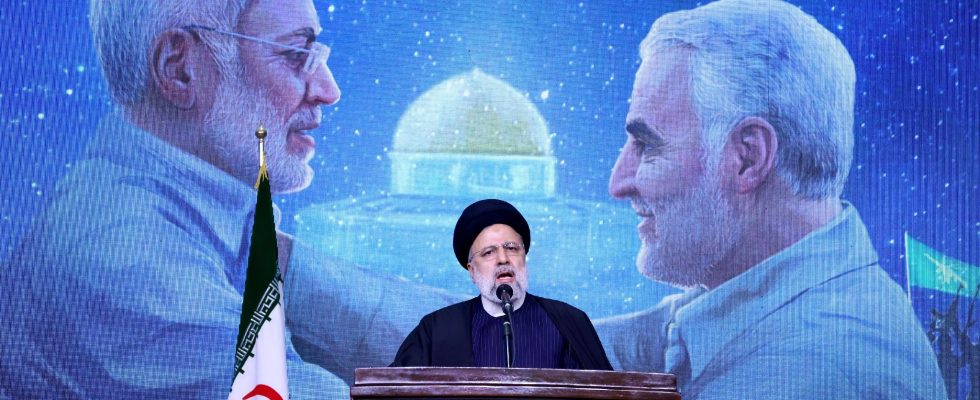He has been dead for more than four years, but the doctrine of General Soleimani, killed on January 3, 2020 by an American strike in Iraq, is still very much alive. This powerful Iranian soldier, head of the Al-Quds force, within the paramilitary organization of the Revolutionary Guards, had, among other things, unified around a hundred Shiite militias in Iraq to coordinate them, with the aim of accomplishing the moukawama, against the United States and Israel. The “m” in the acronym “Hamas”, the Palestinian movement, also refers to “al-muqawama”. The literal translation of the term is “resistance”, but the term goes further: this doctrine is characterized by a form of permanent combat aimed at wearing down the adversary, and this is how Hassan Nasrallah, leader of Hezbollah and Khaled Mechaal, former leader of Hamas, defines it. In all terrain and in all circumstances, this means harassing force of the enemy, even if the forces are disproportionate.
One of the latest manifestations of this “persistent war” took place last weekend, in the form of a major attack on a US base in Iraq, carried out by a pro-Iranian militia. This is called “Al-Muqawama al-Islamiyah fi al-Iraq”: the Islamic resistance in Iraq. It also attacked an American base in Syria. Tehran has also fired ballistic missiles against targets in Syria and Iraq against American and Israeli interests, and carried out strikes in Pakistan, in a related conflict. As Jean-Pierre Perrin, a great specialist on Iran, rightly mentions in the collective work Strategic Survival Guide (Ed. Equateurs, 2023), “it is on Syrian territory that Iranians and Israelis wage war almost on a daily basis”. “Assad has lost a good part of his territory to the Iranian militias,” he says.
Iraq is also struggling to break away from Iranian influence, even if tensions seem to appear in the domination of Iranian influence on the country: Baghdad recalled its ambassador to Tehran, after the Iranian strikes in mid-January against the capital of Iraqi Kurdistan, Erbil. In a recent note which details Tehran’s control, Washington Institute researchers Michael Knights, Hamdi Malik and Crispin Smith show that the Iraqi state is in fact in the hands of militias supported by Tehran. “As Iran and its ‘axis of resistance’ strengthen its ties with Russia and China, there is the risk that a ‘moukawama’ dominated Iraq will be increasingly involved in this coalition in the future anti-Western”, they assert.
Increasingly serious threat
Everywhere, Iranians are putting renewed pressure to demonstrate their presence and their interests. Western chancelleries, including France, are looking for the right mix in the face of this increasingly serious threat. The White House fears more than ever the tipping point that could drag it further into the war. “The United States has shown in the past, when these attacks have occurred in Iraq and Syria, that we respond when we consider it necessary to reestablish and try to re-establish deterrence,” declared Jon Finer, one of US President Joe Biden’s national security advisers.
Responses which remain very limited to avoid being drawn into a large-scale conflict. The Americans have already had to resort to direct strikes against the Houthis, another “proxy of Iran”, rebels from Yemen who have been disrupting maritime traffic in the Red Sea since mid-October, resulting in a drop in commercial volume. transiting through the Suez Canal by 42% in two months, according to the UN. The latter, who claim to belong to the “axis of resistance”, regularly feature themselves in propaganda videos with effigies of Hassan Nasrallah and the… late general Qassem Soleimani.
.
